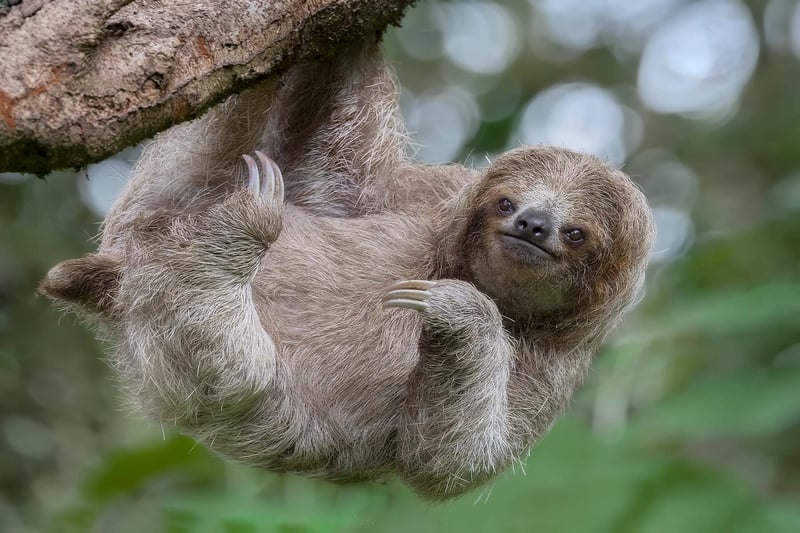
This week, World Animal Protection is at CITES CoP20 to advocate for stronger legal protections for wild animals exploited in the pet trade and entertainment.
Billions of wild animals suffer in the wildlife trade every year. Some are killed to use their body parts, and some are sold for use as “pets” or for entertainment at zoos and aquariums. Two-toed sloths are among these animals. Although sloths face severe threats driven by habitat loss and escalating trade for the pet and tourism industries, their global conservation status is listed as “Least Concern” under IUCN, the International Union for the Conservation of Nature’s Red List of Threatened Species.
Sloths in the Wildlife Trade
The demand for sloths for use as “pets” and in zoos is growing. The primary countries exporting sloths are Honduras, Panama, Nicaragua, Costa Rica, and Guyana, while the primary importing countries are the US, Japan, Hong Kong, the Bahamas, and Norway. The US imported 299 sloths between 2016 and 2020. Almost all of these sloths—296—were taken from their homes in the wild.
Sloths are popular fixtures at US zoos and petting zoos, where they’re used as props in selfies and in “interactions” where people pay to touch or feed sloths. This isn’t just a conservation issue—these interactions are dangerous and frightening for sloths.
Sloths used in encounters exhibit clear indications of severe stress and fear. Sloths are routinely mishandled by tourists who manipulate their arms and claws inappropriately and don’t give sloths proper support when holding them. Researchers documented that manipulated sloths displayed constant hypervigilance, spending 51% of their time inspecting their surroundings—a fivefold increase compared to free-living sloths.
Sloths suffer merely from being kept in captivity. Sloths are highly sensitive to human presence and noise. Research has demonstrated that increased noise levels in zoos are correlated with signs of stress in sloths. Male sloths showed increased restlessness, and female sloths spent more time hiding.
Increasing CITES Protections for Sloths
We’re in Samarkand, Uzbekistan, at CITES CoP 20 to urge the Parties to the Convention to increase protections for sloths by listing them under Appendix II. Species under Appendix II may still be traded, but the trade is monitored and limited. CITES is an important global instrument for regulating the trade in endangered species. But, in practice, it has serious limitations, including prioritizing trade over animal welfare, creating limited conservation benefits, and suffering from weak, politicized governance and enforcement and slow decision-making. It has done little to constrain the overall wildlife trade.
Ending the Wildlife Trade. Forever.
The reality is that all trade, legal or illegal, hurts animals. But international agreements like CITES offer meaningful protections for animals as we work to end the wildlife trade entirely. An estimated 110 million people visit cruel wildlife attractions every year, you can help end this industry by not being one of them. Check out our wildlife-friendly travel principles to keep animals safe on your next vacation.